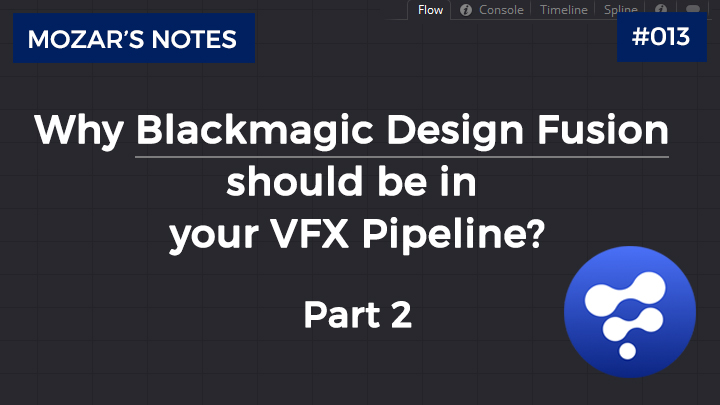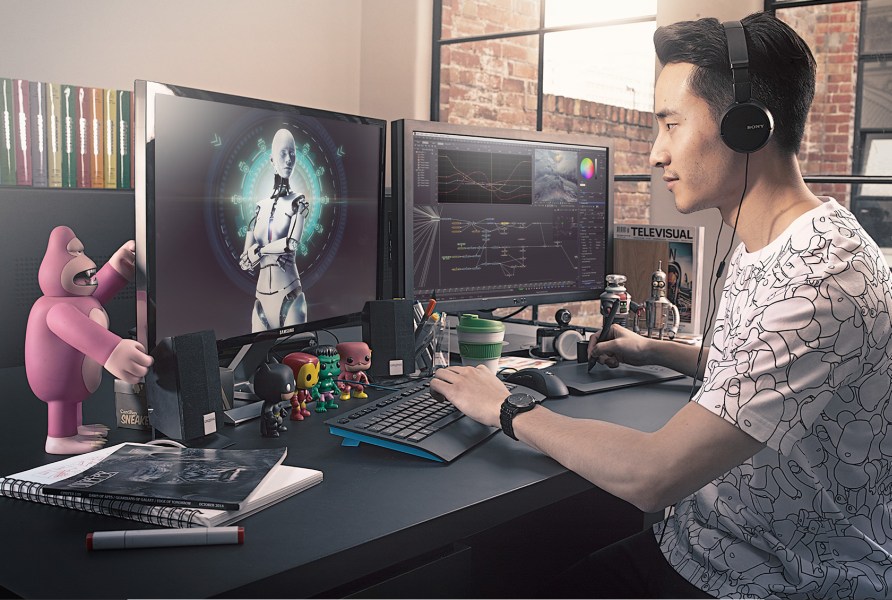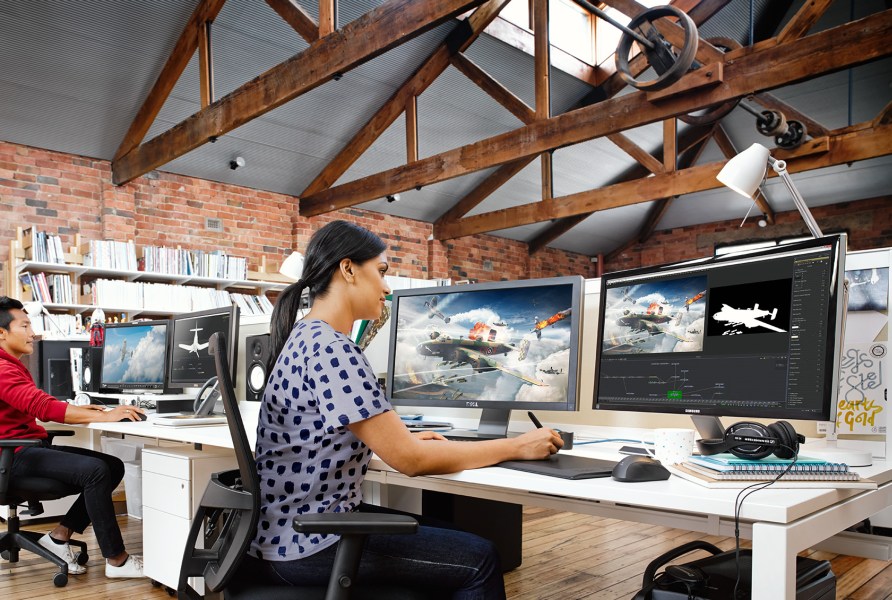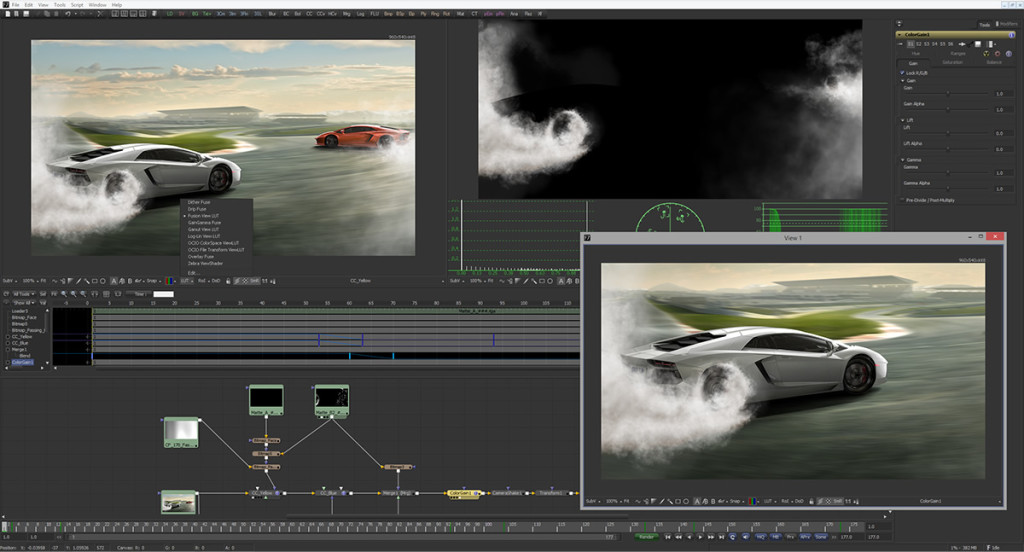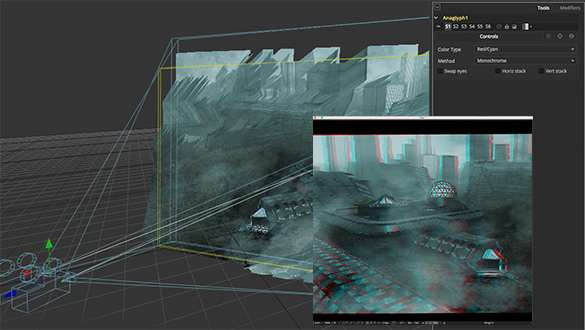Fusion software is in huge demand from Animation and Visual Effects artists worldwide. Check out the second edition why Fusion is essential in Post Production pipeline.
So, you have gone through the first part:
Top 10 Reasons why Blackmagic Design Fusion should be in your VFX Pipeline – Part 1.
Get more insights of the Fusion software why it is admired by the industry professionals all around the globe.
4) Stable and intuitive Node Based Architecture:
Fusion’s node based workflow is ideal for top notch production works. Check out how it helps in the VFX pipeline.
- The artist can access the entire production pipeline from scratch to the final output at one single point of time.
- The GPU accelerated compositing workflow provides on the fly preview output.
- The node based compositing architecture can tackle even hundreds of nodes (layers), in-built tools, macros and third party plugins with very easy navigation.
- The digital artist never gets lost in giant compositing due its visual workflow nature.
- Finding a specific node is very much easy compare to traditional layer based system.
- Sticky Note and Underlay are two very smart tools to manage intuitive compositing pipeline logically with greater control.
- Practically, every Merge node is pre-composition, without hiding the inner nodes. This is one of the major benefit over layer based architecture softwares.
- It greatly advances the tweaking process in real time with help of responsive user interface.
- Very advanced 4K toolset runs smoothly.
- Hardware rendering / scrubbing back and forth of source footages can be done in real time.
5) Kick Ass 3D workspace:
Fusion software is shipped with very advanced tool sets of 3D environment.
- Apart from basic 3D primitive shapes; it is equipped with camera, lighting, shadow, texturing, materials, displacement and other powerful 3D tools.
- Basic shapes can be used to create new geometries and various deformations.
- FBX and Alembic scenes can be imported completely, so the artist doesn’t need to do back and forth between Fusion and other 3D applications (Autodesk Maya, Autodesk 3ds Max, Houdini, Cinema 4D etc.) to achieve the final look and feel.
- Easy import of matchmoved cameras from various 3D Tracking softwares like PFTrack, Boujou, SynthEyes, 3DEqualizer, MatchMover.
- The artist can easily combine live action shot with 3D tools of Fusion.
- Relighting in Fusion saves a great amount of time and money.
- 2D and 3D compositing environments are tightly integrated for continuous creative changes.
- Enhanced tools for crowd multiplication.
- And here comes the best part: The 3D workspace is GPU accelerated.
6) Tightly integrated Particle system:
Well well well, you want that shiny flashy whoosh effects? No need to go out of Fusion software or use any third party plugin.
- The powerful key framing animation is backbone for cohesion of particles with other 2D and 3D tools.
- The particle tools are openGL accelerated.
- The indigenous 3D environment supports particle system to reflect in its true volume and mass. Along with camera animation, it outcomes the boundary of fake 2.5D compositing.
- Working on real world Physics simulation and real life parameters of particle system, the artist is able to create convincing dynamic effects.
- Particle system is embedded in Fusion from its very early editions and over the time it had significantly modified to keep pace with ever changing demands of visual effects and motion graphics industry.
- Particle render output is seamlessly blended to create wonders in your composition.
7) Stereoscopic Tools:
Stereoscopy or stereoscopic (2D to 3D conversion) is in huge demand. It engross the audience in very realm of storytelling and visual effects. All major super hero movie or VFX based movie comes in stereoscopic version along with its standard 2D version. Stereo output creates an illusion of (fake) depth from certain angles. As we work in the controlled environment of given shooting plates, we can do manipulate 3D depth up to convincing level.
- The naive stereoscopic 3D toolset is capable of delivering high quality output.
- In-built optical flow image analysis toolset is completely optimized for stereoscopic 3D work.
- Stereoscopic tools are combined in Camera for faster interaction with less node connections.
- It features all standard stereoscopy tools like eye separation, convergence, disparity tools, align tools, stack features and many more.
- All the tools can be enhanced via individual or combined Expressions to maintain relative distance, DOF (Depth Of Filed), focus and various other parameters for realistic output.
- Camera projection can also be used to convert it into stereoscopic output. But naturally, only from rendering camera perspective.
- OpenGL supports the stereoscopy 3D tools for faster speed.
- Various major hardware support is also established for faster playback.
Read the last and final chapter of Fusion top 10 series:

